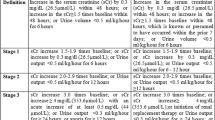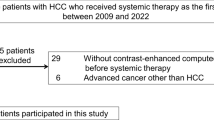Abstract
The pediatric end-stage liver disease score (PELD) was devised and validated as a tool for predicting mortality and morbidity in children with chronic liver disease waiting for a liver transplant (LT). It has become a useful guide for prioritizing organ allocation in the United States. The hepatic artery resistance index (HARI) also predicts waiting list mortality in children with biliary atresia. Does the PELD score or HARI predict outcome after LT for biliary atresia? Twenty consecutive children who underwent LT for biliary atresia between 2001 and 2005 were reviewed. Their PELD score was calculated periodically between listing and transplantation and HARI was measured at listing. Outcome variables were operative blood transfusion requirements, ICU stay and postoperative stay. Median age at LT was 8 (2–204) months. After allowing for the type of graft, the PELD score and the change in PELD score between listing and LT (ΔPELD) showed no significant correlation with blood transfusion requirements, but both the PELD score at listing and ΔPELD showed a trend toward a statistically significant positive correlation with overall hospital stay. Pre-transplant HARI showed a statistically significant positive correlation with the PELD score at listing (r = 0.46, p = 0.05) but did not correlate significantly with hospital stay. In this relatively small but homogeneous group of children undergoing LT for biliary atresia, PELD, and ΔPELD scores showed a trend toward a statistically significant positive correlation with overall hospital stay. However, neither PELD scores nor the pre-transplant HARI showed a definite correlation with outcome. Post-transplant complications are probably more important factors determining ICU and hospital stay in children currently transplanted for biliary atresia.


Similar content being viewed by others
References
McDiarmid SV, Merion RM, Dykstra DM, Harper AM (2004) Selection of pediatric candidates under the PELD system. Liver Transpl 10(10 Suppl 2):S23–S30
Taylor RM, Cheeseman P, Rela M, Heaton N, Mieli-Vergani G, Dhawan A (2002) The predictive value of the PELD model after liver transplantation in children. J Pediatr Gastroenterol Nutr 34:435 [Abstract]
Bourdeaux C, Tri TT, Gras J, Sokal E, Otte JB, de Ville de Goyet J, Reding R (2005) PELD score and posttransplant outcome in pediatric liver transplantation: a retrospective study of 100 recipients. Transplantation 79:1273–1276
Broide E, Farrant P, Reid F et al (1997) Hepatic artery resistance index can predict early death in children with biliary atresia. Liver Transpl Surg 3:604–610
O’Meara ME, Whiteley SM, Sellors JM et al (2005) Immediate extubation of children following liver transplantation is safe and may be beneficial. Transplantation 80:959–963
McDiarmid SV, Anand R, Lindblad AS et al (2002) Development of a pediatric end-stage liver disease score to predict poor outcome in children awaiting liver transplantation. Transplantation 74:173–181
Utterson EC, Shepherd RW, Sokol RJ et al (2005) The split research group Biliary atresia: clinical profiles, risk factors, and outcomes of 755 patients listed for liver transplantation. J Pediatr 147:180–185
Freeman RB Jr, Wiesner RH, Edwards E et al (2004) Results of the first year of the new liver allocation plan. Liver Transpl 10:7–15
Kelly DA (1997) Nutritional factors affecting growth before and after liver transplantation. Pediatr Transpl 1:80–84
Author information
Authors and Affiliations
Corresponding author
Rights and permissions
About this article
Cite this article
Asthana, S., McClean, P. & Stringer, M.D. Does the pediatric end-stage liver disease score or hepatic artery resistance index predict outcome after liver transplantation for biliary atresia?. Pediatr Surg Int 22, 697–700 (2006). https://doi.org/10.1007/s00383-006-1737-1
Accepted:
Published:
Issue Date:
DOI: https://doi.org/10.1007/s00383-006-1737-1




